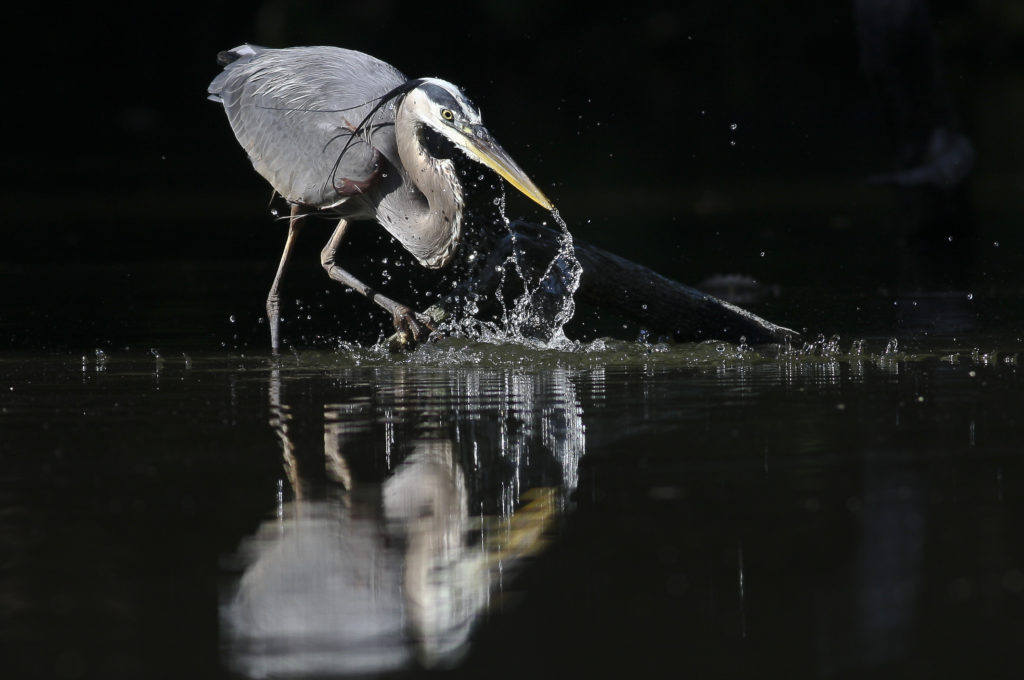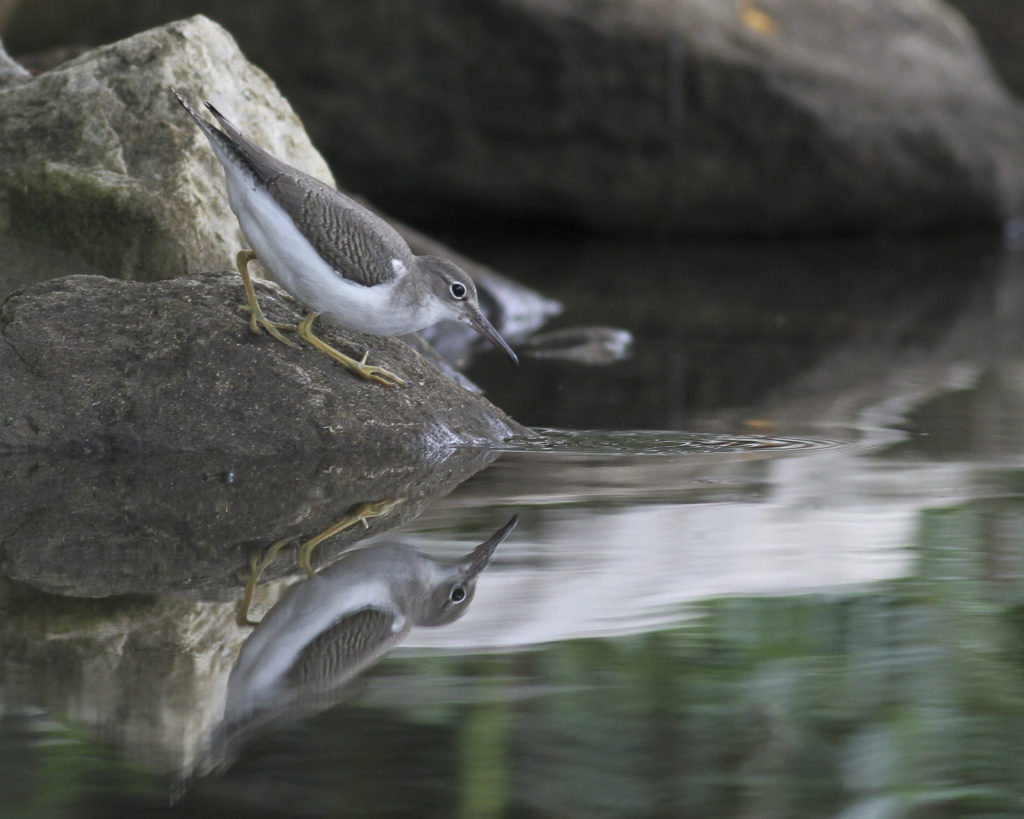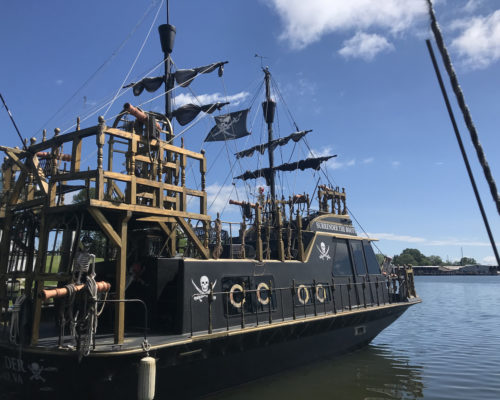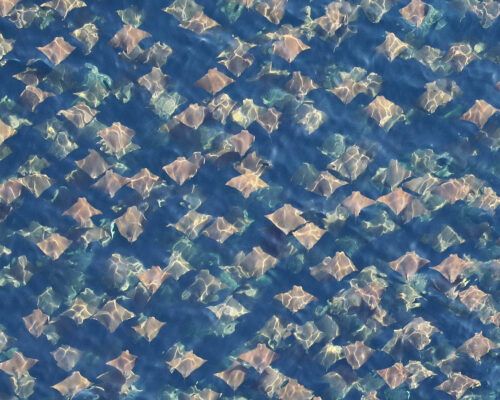Editor’s note: Living near the Bay, so many of us are inspired to pull out our phone and snap a picture of an animal in its element… but taking good pictures from a moving boat holds its own challenges. Longtime wildlife columnist and photographer Dr. Wayne Bierbaum shares what he learned the hard way and the best combination of equipment he’s found for photographing Bay life in motion.
I am frequently challenged when trying to take photos of a moving subject. Just yesterday, I was trying to get a photo of a golden-crowned kinglet. They are tiny nervous birds and by the time I could focus on one, it would flit to another spot. That was tough but taking a photo when I’m moving and the animal is moving doubles the challenge. Such is what happens when I try taking photos from a boat.
My first attempt at capturing wildlife photos from a boat was during a weeklong canoe camping trip on Florida’s Santa Fe and Suwannee Rivers. I used a 35mm film camera and a 135mm telephoto lens and tried to get sharp photos along the route of wading birds, alligators, turtles, and raccoons. However, the movement of the canoe combined with the animal’s reactions made the photos too blurred to use.
Jump ahead to 2012, I now had a digital camera and a 400mm lens and I was out on the Chesapeake Bay watching northern gannets dropping into the water to catch fish. They are slim white birds that dive into the water like an arrow at some 50+mph. The waves were tossing the boat and my horizon up and down. Trying to follow a fast-moving bird with a camera as it dove down from a great height was impossible. I did get some okay photos by manually focusing where I thought the bird would hit the water. But that only worked with birds that were pretty far away.
Using the same camera setup in a canoe was slightly easier as I used a bungee cord to lock a tripod with a gimbal head into the bottom and sides of the boat. As I paddled toward an animal, I planned to lift the paddle and glide in a direction that would pass close enough that I could get a photo within 45 degrees to the right or left of the bow. Because a canoe is tippy, I and my bow person (if there were one), would need to be as still as possible.
Of course, water currents and a breeze would ultimately scrap my plan. Still, using that method, I was able to get about three photos each “drift” which frequently was enough.
Now, I have purchased a mirrorless camera that has better artificial intelligence compared to my previous cameras. This new camera body, Canon R6, has image stabilization, auto-tracking features, plus “eye” recognition. Now, with the image-stabilized lens and camera body combined, the horizon moves much less. The animal that I try to photograph, once captured by autofocus, is held in focus as it or I move. I still have to swing the camera to keep it pointed in the right direction and adjust the shutter speed and image brightness but even so, taking photos from a boat is much easier than just a couple of years ago.




